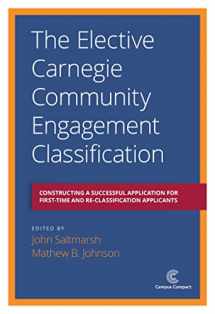
The Elective Carnegie Community Engagement Classification: Constructing a Successful Application for First-Time and Re-Classification Applicants
Book details
Summary
Description
The Carnegie Engagement Classification is designed to be a form of evidence-based documentation that a campus meets the criteria to be recognized as a community engaged institution. Editors John Saltmarsh and Mathew B. Johnson use their extensive experience working with the Carnegie Engagement Classification to offer a collection of resources for institutions that are interested in making a first-time or reclassification application for this recognition. Contributors offer insight on approaches to collecting the materials needed for an application and strategies for creating a complete and successful application. Chapters include detailed descriptions of what happened on campuses that succeeded in their application attempts and even reflection from a campus that failed on their first application. Readers can make use of worksheets at the end of each chapter to organize their own classification efforts.


We would LOVE it if you could help us and other readers by reviewing the book
Book review




